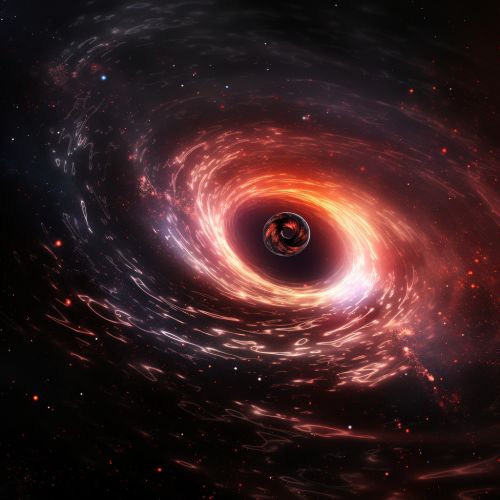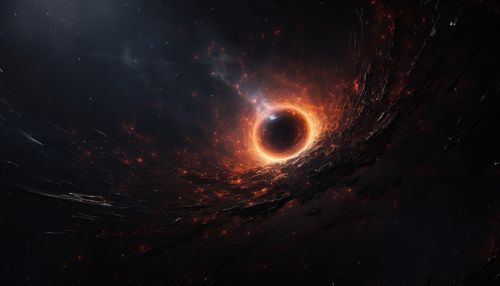Black Hole
Introduction
A black hole is a region of spacetime exhibiting gravitational acceleration so strong that nothing—no particles or even electromagnetic radiation such as light—can escape from it. The theory of general relativity predicts that a sufficiently compact mass can deform spacetime to form a black hole.


History
The idea of a body so massive that even light could not escape was first proposed by English geologist John Michell in a letter written to Henry Cavendish in 1783. The term "black hole" was coined many years later in 1967 by American astronomer John Wheeler.
Formation
Black holes are formed from the remnants of massive stars. When such a star has exhausted the nuclear fuel in its core and collapsed under the force of gravity, it undergoes a supernova explosion. What remains is a dense, hot core called a neutron star. If the core's mass is more than about three times the mass of the Sun, the equations of general relativity predict a gravitational collapse to a black hole.
Properties
Black holes are characterized by the "no-hair" theorem, which states that a stable black hole can be described completely by three externally observable classical parameters: mass, electric charge, and angular momentum. All other information about the matter which formed a black hole or is falling into it, "disappears" behind the black hole event horizon and is therefore permanently inaccessible to external observers.
Event Horizon
The event horizon of a black hole is the boundary around the mouth of the black hole where light loses its ability to escape. Once a particle crosses the event horizon, it cannot leave. Gravity is strongest at the singularity in the centre of black holes.
Singularity
The singularity lies at the center of a black hole, a point where the curvature of spacetime becomes infinite, and gravitational forces become incredibly strong. The singularity is hidden within the event horizon and hence cannot be observed from the outside.
Types of Black Holes
There are four known distinct types of black holes: Stellar, Intermediate, Supermassive, and Miniature. The classification is based on their mass.
Stellar Black Holes
Stellar black holes are formed when a massive star collapses. They have a mass up to 20 times greater than the mass of the sun and can fit within a ball with a diameter of about 10 miles.
Intermediate Black Holes
Intermediate black holes are formed by the collision and merger of stellar black holes. They have a mass between a few hundred and a few hundred thousand times that of the sun.
Supermassive Black Holes
Supermassive black holes are the largest type of black hole, in the order of hundreds of thousands to billions of solar masses. Most, if not all, galaxies, including the Milky Way, are believed to contain a supermassive black hole at their galactic centers.
Miniature Black Holes
Miniature black holes, also known as quantum mechanical black holes or micro black holes, are predicted to exist due to quantum mechanical effects, although they have yet to be observed directly.
Detection
Black holes are detected indirectly by observing their effect on nearby matter. For example, a black hole's strong gravity can pull matter from a nearby star. This matter forms an accretion disk around the black hole and releases x-rays that can be detected by telescopes.
Black Holes and Quantum Physics
The study of black holes has led to fundamental discoveries in quantum physics. The most famous of these is Hawking radiation, a theoretical prediction made by physicist Stephen Hawking in 1974. This radiation is due to quantum effects near the event horizon.
